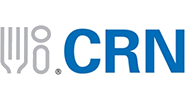Allowing SNAP recipients to use their benefits to purchase a multivitamin-mineral would provide them with a safe and easy opportunity to improve their nutritional status
PRINTABLE PDF | FACT SHEET | SCIENTIFIC PAPER
The Supplemental Nutrition Assistance Program (SNAP, formerly the Food Stamp Program) offers nutrition assistance to millions of eligible, low-income families and is our country’s first line of defense against hunger. The purpose of SNAP is to “promote the general welfare and to safeguard the health and well-being of the nation’s population by raising the levels of nutrition among low-income households.” (SNAP Program Regulations, CFR Title 7 Part 271.1)
A multivitamin-mineral can serve as an effective bridge between what Americans should eat and what they actually consume. Repeated studies have shown that Americans do not consume essential nutrients at recommended levels through diet alone. Low-income and older Americans are more likely than others to have insufficient and nutritionally inadequate diets. The best way to get all of the recommended daily nutrients is to eat a healthy, well-balanced diet. But this is not always possible, especially for low-income populations.
Nutrition science continues to demonstrate that Americans have significant nutrient shortfalls and that a multivitamin-mineral can safely fill essential nutrient gaps. By doing so, these beneficial products can provide an efficient solution for SNAP recipients looking to ensure adequate intake of essential nutrients. In addition, including a multivitamin-mineral as a SNAP program benefit creates no additional costs to the program and provides low-income consumers with additional choices to stay healthy. Therefore, allowing SNAP recipients to use their benefits to purchase a multivitamin-mineral would provide them with a safe and easy opportunity to improve their nutritional status.
Frequently Asked Questions:
What is a multivitamin-mineral?
A multivitamin-mineral is a dietary supplement product that combines vitamins and minerals. SNAP eligible multivitamin-mineral products would provide at least one-half of essential vitamins and minerals at fifty percent or more of the daily value and would not exceed the tolerable upper intake levels. Common multivitamin-mineral formulas often contain Vitamin A, Vitamin C, Vitamin D, Vitamin E, Vitamin K, Niacin, Vitamin B6, Folic Acid, Vitamin B12, Biotin, Calcium, Iodine, Magnesium, Potassium, Zinc, Iron, and other essential vitamins and minerals.
What is the purpose of including a multivitamin-mineral in the SNAP program?
To provide a safe and convenient way to ensure adequate intake of essential nutrients for low-income Americans by allowing for the purchase of a multivitamin-mineral using SNAP benefits.
How many Americans use dietary supplements? How many use a multivitamin-mineral product?
More than 170 million Americans use dietary supplements annually. And more than 120 million U.S. adults take a multivitamin-mineral. (2016 CRN Consumer Survey on Dietary Supplements) Low-income Americans deserve access to the same health benefits that other Americans receive from consuming a multivitamin-mineral.
BACKGROUNDER
Why should SNAP recipients be allowed to use their benefits to purchase a multivitamin-mineral?
Multivitamin-minerals are a safe, convenient, and scientifically supported way to fill essential nutrient gaps. For some population groups, supplemental intakes are specifically recommended as a preferred means of obtaining certain nutrients, and a multivitamin-mineral would cover many of those needs. These products represent a cost-effective public health solution to deliver adequate amounts of essential vitamins and minerals. Their widespread use helps to ensure adequate nutrition for millions of Americans and contributes to reductions in the risk of several chronic diseases, reducing health care costs for all Americans.
Are dietary supplements, including the multivitamin-mineral, regulated?
Yes. The dietary supplement industry is regulated by the Food and Drug Administration (FDA) and the Federal Trade Commission (FTC). The FDA has regulatory authority under the Federal Food, Drug and Cosmetic Act as amended in 1994 by the Dietary Supplement Health and Education Act (DSHEA) and in 2006 by the Dietary Supplement and Nonprescription Drug Consumer Protection Act. Virtually all facets of dietary supplement manufacturing, labeling, and marketing are covered by extensive regulations issued and enforced by FDA and FTC.
Would making a multivitamin-mineral eligible as a SNAP purchase cost the SNAP program more money?
No. Including a multivitamin-mineral in SNAP does not create additional costs to the government, and provides low-income consumers with a healthy choice to obtain essential nutrients.
How much does a multivitamin-mineral cost?
Brand name multivitamin-minerals at retail generally cost less than $10 per bottle. Private label multivitamin-minerals are less expensive and average under $7 per bottle. The average cost is about a dime a day.
How would SNAP recipients know which multivitamin-mineral would qualify for purchase in the store?
Manufacturers of eligible products would be willing to add a symbol to the product label to identify the product as eligible for purchase with SNAP benefits, and the dietary supplement industry would be willing to provide consumer and retail education about which products would be eligible for purchase with SNAP benefits. In addition, multivitamin-mineral manufacturers will work with the U.S. Department of Agriculture (USDA), in consultation with experts, to incorporate SNAP education initiatives about the new purchase option and the role a multivitamin-mineral plays as a supplement to, not a substitute for, good nutrition through conventional foods.
Does USDA have to change its policy in order for a multivitamin-mineral to be included under SNAP benefits?
No. USDA currently has a policy prohibiting the purchase of vitamins and mineral supplements under SNAP benefits, but Congress never decreed that a multivitamin-mineral should be excluded from purchase with SNAP benefits. The USDA’s current policy of prohibiting the purchase of vitamins and mineral supplements is outdated and creates a barrier to improving the nutritional status of low-income Americans. Congress should pass legislation to include a multivitamin-mineral as an eligible purchase with SNAP benefits, and this would override the current and outdated USDA policy.

